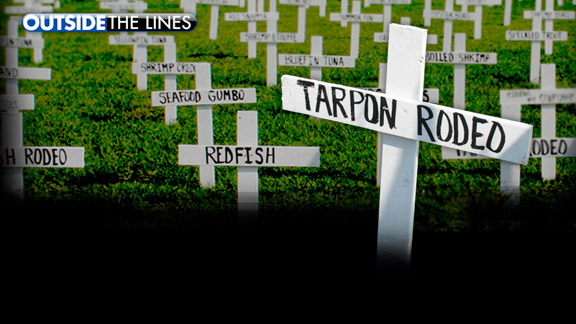OTL: The Franchise
![]() n the beginning, there was the word. And that word was no. On a cloudy morning in 1984, three men met in an Amtrak dining car winding through the Rocky Mountains, en route from Denver to Oakland, Calif. The first was Trip Hawkins, a closet "Strat-O-Matic Football" junkie and founder of video game maker Electronic Arts (which has a relationship with ESPN to integrate content into its games). The second was Joe Ybarra, Hawkins' lieutenant, a high school chess champ turned pigskin fanatic. The third was John Madden, the former Super Bowl-winning coach, hardware store pitchman, televised NFL evangelist and poet laureate of interior line play.
n the beginning, there was the word. And that word was no. On a cloudy morning in 1984, three men met in an Amtrak dining car winding through the Rocky Mountains, en route from Denver to Oakland, Calif. The first was Trip Hawkins, a closet "Strat-O-Matic Football" junkie and founder of video game maker Electronic Arts (which has a relationship with ESPN to integrate content into its games). The second was Joe Ybarra, Hawkins' lieutenant, a high school chess champ turned pigskin fanatic. The third was John Madden, the former Super Bowl-winning coach, hardware store pitchman, televised NFL evangelist and poet laureate of interior line play.
Photo Gallery
Then, as now, Madden had no use for airplanes. He was nearly as leery of computers. This was before Google, PlayStation or the Internet. People didn't carry credit card-thin smart phones in their pockets, and video games were quarter-eating diversions for nerdy boys. Madden was a football guy. Intelligent as hell, sure. Unafraid of the telestrator. Once taught an X's and O's class at Berkeley. Yet was totally unmoved by "Pac-Man fever." Honestly didn't know what the heck a PC did. Booming and boisterous, an alpha male to the core, Madden brandished a cigar throughout the meeting -- one nearly a foot long with the diameter of a quarter; a veritable kraken of Cohibas to be gazed upon with despair. A chew toy.
Spittle-splattered but unbowed, Hawkins made his pitch, the same one he previously had delivered in a fast-food parking lot outside Madden's Bay Area office: Help me build a game. Lend your expertise. I'll put your name on the box.
Madden was intrigued. Maybe, he thought, this could become a coaching tool. Pick a play, run it on a machine, see if it works. No need to scrimmage.
If it's not 11-on-11, it's not real football. That was a deal breaker. If it was going to be me, and going to be pro football, it had to have 22 guys on the screen. If we couldn't have that, we couldn't have a game.
-- JOHN MADDEN
He sketched formations on paper, lines branching in every direction -- little masterworks of unintentional abstract art that Hawkins would later frame.
The one-time Oakland Raiders coach talked philosophy: Where's my playing field? Below sea level and it rains a lot? Then give me Gene Upshaw. Put the defense on skis and push them all day long.
Hawkins listened. Ybarra took notes. The duo promised they would create as sophisticated a simulation as home computers would allow. Real football, with seven players to a side …
Right there, Madden balked -- even though he was technically under contract with EA to endorse a football game. "If it's not 11-on-11," he said, "it's not real football."
"That was a deal breaker," Madden recalled. "If it was going to be me and going to be pro football, it had to have 22 guys on the screen. If we couldn't have that, we couldn't have a game."
The consummate video game
1982
Harvard grad and former Apple employee Trip Hawkins founds video game maker Electronic Arts, in part to create a football game; one year later, the company releases “One-on-One: Dr. J vs. Larry Bird,” the first game to feature licensed sports celebrities. Art imitates life.
1982
Harvard grad and former Apple employee Trip Hawkins founds video game maker Electronic Arts, in part to create a football game; one year later, the company releases “One-on-One: Dr. J vs. Larry Bird,” the first game to feature licensed sports celebrities. Art imitates life.
Everyone knows how the story ends. "Madden" uber alles. Twenty-two guys on the screen? Try a 22-year-old pop culture phenomenon, a video game once immortalized in a television commercial featuring the apocalyptic strains of "O Fortuna" from the "Carmina Burana" cantata -- and the effect was only slightly over-the-top.
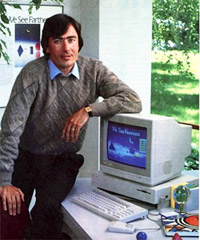
You can measure the impact of "Madden" through its sales: as many as 2 million copies in a single week, 85 million copies since the game's inception and more than $3 billion in total revenue. You can chart the game's ascent, shoulder to shoulder, alongside the $20 billion-a-year video game industry, which is either co-opting Hollywood (see "Tomb Raider" and "Prince of Persia") or topping it (opening-week gross of "Call of Duty: Modern Warfare 2": $550 million; "The Dark Knight": $204 million).
You can witness the cultural power of "Madden": grown men lining up outside Walmarts for the game's annual midnight release; rock bands, such as Good Charlotte, going mainstream via inclusion on the "Madden" soundtrack; a pokerlike underground circuit of cash tournaments; the black-cat mojo of the "Madden" cover curse superseding the Sports Illustrated cover jinx; Madden himself being recognized less for his Hall of Fame coaching and broadcasting career than for a game that beat him into Canton.
Alternately, you can listen to Cleveland Browns kick returner Josh Cribbs.
"I used to play 'Madden' all the time with [former teammate] Kellen Winslow [Jr.]," he said. "When Kellen got married, he did it at his house. After the ceremony, he went to play 'Madden'! He just got married. His wife is sitting there. And he's playing. We all made fun of him."
It's a "Madden," "Madden," "Madden" world. We're all just playing in it. How did this happen? That's the story you don't know. … And it's a story that could have starred Joe Montana.
Dreaming of Joe Cool
1983-84
Hawkins approaches former Oakland Raiders coach and NFL television analyst John Madden to endorse a football game. Madden agrees, but insists on realistic game play with 22 on-screen players, a daunting technical challenge.
1983-84
Hawkins approaches former Oakland Raiders coach and NFL television analyst John Madden to endorse a football game. Madden agrees, but insists on realistic game play with 22 on-screen players, a daunting technical challenge.
They wanted Montana. Wouldn't anybody? Think about it: You're Hawkins; a pigskin game is your lifelong dream. As a child, he played wingback on a flag-football squad. He also fell in love with the 1967 edition of "Strat-O-Matic Football," a paper-and-dice pigskin game that was, in a rudimentary way, the "Madden" of its era.
A bright and precocious teenager, Hawkins created a "Strat-O-Matic" knockoff and attempted to start a business. His next-door neighbor in La Jolla, Calif., was former AFL president Milt Woodard, which gave Hawkins the opportunity to send a proposal to Kansas City Chiefs owner Lamar Hunt. Hunt wrote back. Beat it, kid.
No matter. Hawkins ordered parts. Set up an assembly line in his family's living room. Borrowed $5,000 from his father and took out ads in NFL game programs.
He lost every penny.
The flop was a slap in the face. How could a great football simulation not sell? Around the same time, he got his first computer and, with it, an answer. "Strat-O-Matic" was too hard. Players had to crunch too many numbers, obliterating the necessary suspension of disbelief. Solution? Put the math inside the computer. Let the machine do the work.

While attending Harvard, Hawkins created his own major in game design. He programmed his first football simulation on a PDP-11 computer, a metal cabinet with flashing lights and tape-reel data storage that spanned two rooms. In 1975, he determined it would take exactly seven years for enough computers to reach homes to support a gaming business.
Eight years later, he was right on schedule. Hawkins was Employee No. 68 at Apple Computer. They called him "junior Steve Jobs." He codified the company's unique, oft-imitated startup culture. Made millions in stock options, then cashed out. Started Electronic Arts out of his own pocket from a home office, then moved to his first real workspace in San Mateo, Calif., just north of Silicon Valley. In January 1984, Time magazine named the personal computer its "Machine of the Year"; about 20 miles south in Cupertino, Apple was putting the finishing touches on a beige plastic box called Macintosh.
Meanwhile, Hawkins had just shipped his first games, packaged in stylish boxes that looked like album jackets because that's what EA was all about: the artists and the creators. The anonymous guys coding Atari 2600 cartridges were finally getting their rock-star due. Before founding EA, Hawkins went to Los Angeles to study at the feet of record mogul Jerry Moss. What's wrong with a little Hollywood?
Take EA's early basketball game: "One-on-One: Dr. J vs. Larry Bird." The real guys -- sports celebrities -- on the box. On the screen, too. Controlled by a joystick. No one had ever done that before. Julius Erving even came to Hawkins' studio and hung out for a day. Shot hoops with Hawkins at a local YMCA. So awesome. Only he was not Hawkins' hero. Not like Montana. Montana was God. Not a god. The God. Montana played football, as Hawkins briefly did at Harvard but better. Way better, which is kind of the point. He had already won a Super Bowl for the San Francisco 49ers. Montana-to-Clark. The Catch.
Hawkins was about to make a football game to make up for his failed high school project and show the world everything he had learned. When his dream was ready, when it was coded and debugged and sitting on a store shelf in a stylish box that resembled the cover of, say, Def Leppard's "Pyromania," it was going to need a face. A mug to move the product, for sure, but also to represent the creators.
Montana. Gotta be Joe Cool. Seriously, who else would even be worth considering?
Plenty of pain equals plenty of gain
1988-90
EA releases the first Madden football game for the Apple II home computer; a subsequent Sega Genesis home console port blends the Apple II game's realism with control pad-heavy, arcade-style action, becoming a smash hit.
1988-90
EA releases the first Madden football game for the Apple II home computer; a subsequent Sega Genesis home console port blends the Apple II game's realism with control pad-heavy, arcade-style action, becoming a smash hit.
The playbook belonged to the Oakland Raiders, 1980 vintage. There were no pass plays inside, and there were hardly any plays at all. There were calls about formations, blocking schemes and play-action. There were play names, which weren't actually names but rather alphanumeric combinations indicating pass routes or maybe a particular number telling a particular running back to hit a particular hole. Everything read like programming language -- all jargon and technical gibberish.
The playbook came from Madden. One day in the mid-1980s, it arrived at the desk of Ybarra, the EA producer tasked with turning Hawkins' vision into an actual working game.
"I start flipping through," Ybarra said, "and I think to myself, 'These poor people -- how the hell do they ever play football if they have to know all this crap?'"
Montana was out. Already had an endorsement deal with video game console maker Atari. Also out was Cal football coach Joe Kapp, Hawkins' second choice, who wanted royalties.
Enter Madden, who was impressed by Hawkins' pedigree and signed on.
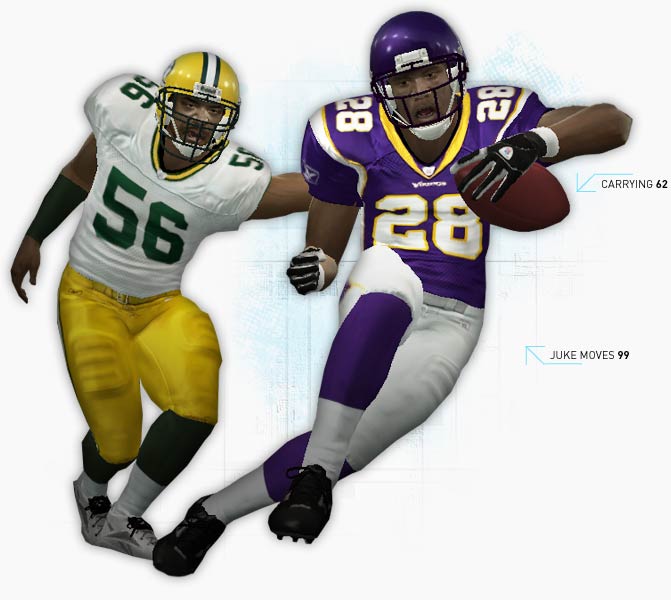
"If this guy went to Harvard and made up his own major in games," the former coach said, "I figured he must be a computer genius."
Also enter 22 players on the screen, Ybarra's professional death march. The erstwhile high school chess champ became an office masochist, logging 18-hour days, helming as many as 17 games at the same time. That was doable, par for EA's startup years. But the Madden-endorsed product was torture.
"All my memories," Ybarra said, "are of pain."
Some of the pain was technical: making a game on a computer, the Apple II, that didn't have enough memory, pixels or disk storage. No sound chip, either, and only one joystick port. The machine could produce four colors, sure, but only if a programmer knew all the dirty tricks. Anything beyond seven-on-seven football caused the on-screen action to slow to a crawl.
"We were trying to model NFL football," Ybarra said, "on a computer with less horsepower than your watch."
Some of the pain was financial. Just as EA brought its first games to market in 1983, the home video game industry imploded. In a two-year span, Coleco abandoned the business, Intellivision went from 1,200 employees to five and Atari infamously dumped thousands of unsold game cartridges into a New Mexico landfill. Toy retailers bailed, concluding that video games were a Cabbage Patch-style fad. Even at EA -- a hot home computer startup -- continued solvency was hardly assured.
"It was like being the newest superhero on a planet that is falling apart and into the sun," former EA producer Don Daglow said. "We didn't know if our superpowers would be enough to defeat those market conditions."
The biggest pain was conceptual: What was a football simulation supposed to look like? How should it play? "Football" on the Atari 2600 console featured three-man teams composed of players who resembled and moved like ambulatory kitchen appliances. Everything was new: play-calling boxes; an "oomph" (read: turbo) button. Ybarra tried a TV-style camera angle. Finding holes at the line of scrimmage proved impossible. He switched to the god's-eye, end zone perspective still used in today's games. The game played better, but it still looked like bleeding Lego blocks.
During the two-day Amtrak ride with Madden, Hawkins and Ybarra quizzed the former coach from dawn to midnight, breaking down passing trees and line stunts and digesting game plans. Ybarra disembarked with blurry eyes, a splitting headache and a legal pad full of notes.
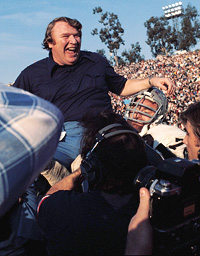
"We spent hours just learning blocking schemes," he said. "By the third year of the project, I could watch pro football on TV and tell you what was going to happen when the players were still lining up."
Development dragged. A single programmer, Robin Antonick, slaved away on the code. Six months became three years. At the time, the average game took 15 months to make. More than once, Madden himself figured EA had simply given up. An anxious Hawkins flirted with having an outside developer, Bethesda Softworks, build the game. A short-lived business deal ended in a multimillion-dollar lawsuit, later settled out of court.
"It was like Herbert Hoover," Hawkins said. "Prosperity is just around the corner."
Around EA's offices -- a jock-friendly environment, home to Nerf ball fights, weekday golf outings and the occasional shoving match -- the "Madden" project earned a nickname: Trip's Folly.
"Most games that went as late as 'Madden' and had that many struggles," Daglow said, "they'd take them out behind the barn and do the honorable thing."
Hawkins pressed on. Madden introduced him to Frank Cooney, a football beat writer for the San Francisco Examiner. Cooney and Madden went way back, having attended Bay Area high schools just five miles apart. Although the coach was a decade older than the scribe, the two had formed a friendship during Madden's time in Oakland. At heart, both were football nerds. As a side project, Cooney regularly attended the draft combine -- unheard of in those days -- and supplied scouting reports on college players to NFL and USFL teams. He also designed a figurine-based board game, "Grid-Grid," that functioned like electric football, only with numeric skill ratings determining the outcome of player interactions.
"I had an idea," Cooney said, "that was waiting for the technology to catch up with it."
In "Madden," Cooney found his tech. Although the game didn't have an NFL license -- San Francisco's gold-helmeted digital quarterback was named "Joe Idaho" -- it did feature players rated in 10 categories. Thanks to Cooney, Idaho's passing arm had pinpoint accuracy. And that wasn't all.
MORE ON "MADDEN"
The Life has more coverage of "Madden NFL 2011," which will be released Tuesday.
"For our playbooks, I would say to Frank, 'Go find out what a team's five signature plays are,'" Hawkins said. "He would go up to the assistant coaches, hand them paper. And they would draw up plays! We collected a huge amount of plays that way."
In 1988, "John Madden Football" was released for the Apple II computer and became a modest commercial success. Ybarra had already left the project to make adventure games. Burned out, he didn't watch real-life pro football for an entire season. Meanwhile, a jubilant Hawkins approached Madden.
Hawkins: "You stayed with me. EA is about to have an IPO [initial public offering]. You can have as much stock as you want."
Madden: "What do you mean by 'have'?"
Hawkins: "Well, you have to buy it -- at the IPO price."
"Hell, I'm just a football coach," Madden says now. "I pointed with my finger, all knowing, and said, 'I gave you my time. I'm not giving you my money.' I showed him!"
From 1989 to 1999, EA's share price went from $7.50 to $70. Madden laughs. "That was the dumbest thing I ever did in my life."
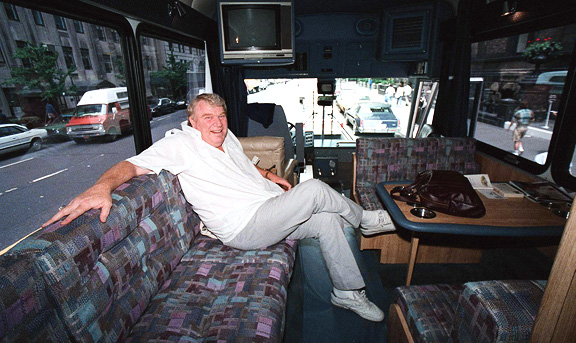
Eschewing the literal for the hyperreal
1995
EA cancels the release of "Madden NFL '96" for Sony's new PlayStation console after programming house Visual Concepts struggles with technical problems and is unable to produce a satisfactory game. EA gives the Madden franchise to Tiburon Studios, which has made "Madden NFL" ever since.
1995
EA cancels the release of "Madden NFL '96" for Sony's new PlayStation console after programming house Visual Concepts struggles with technical problems and is unable to produce a satisfactory game. EA gives the Madden franchise to Tiburon Studios, which has made "Madden NFL" ever since.
The stakes were high for a pair of upstart game makers, with a career-making opportunity and a $100,000 development contract on the line. In early 1990, Troy Lyndon and Mike Knox of San Diego-based Park Place Productions met with Hawkins to discuss building a "Madden" game for Sega's upcoming home video game console, the Genesis. Near the end of the meeting, Hawkins popped a surprise question to the duo: "Are you going to build the game I want to make or the game you want to make?"
"My answer might have been, 'Whatever you want,'" said Lyndon, now head of Left Behind Games, a Christian video game maker. "But before I could open my mouth, Mike says, 'The game I want to make.' I was like, 'Dude, I hope that was the right answer!'"
It was. Because the game that made "Madden" a phenomenon wasn't the initial Apple II release, it was the Genesis follow-up, a surprise smash spawned by an entirely different mindset. Hawkins wanted "Madden" to play out like the NFL. Equivalent stats. Similar play charts. Real football.
By contrast, Lyndon and Knox previously had made a well-received "Monday Night Football" title featuring arcade-style, action-heavy game play. That clicked with Genesis "Madden" producer Rich Hilleman, whose top design priority was fun -- a game with more sacks, more bombs, more tackles in the backfield and more 60-yard runs than real-life NFL football. Something akin to an episode of "The Hills," or what philosopher/author Umberto Eco dubbed the "hyperreal" -- seemingly authentic, yet more entertaining than the genuine article.
"I came to the game from making flight simulations," said Hilleman, who is now EA's chief creative officer. "If you make an F-16 fighter simulation and it's very accurate, to fire a single missile takes like 20 procedures. Only that's not people's perception of being a pilot. People's perception is Tom Cruise. Push a button and blow something up. With Genesis 'Madden,' we wanted to emphasize what makes football exciting, not perfectly replicate the brutality of a 3.1-yard-per-carry running game."
By 1989, EA had established itself in the home computer market, which was largely a realm of adult hobbyists and $2,000 machines. Game consoles were another story. Thanks to its wildly popular NES system -- home to "Super Mario Bros." and "The Legend of Zelda" -- Japanese game maker Nintendo enjoyed a near monopoly on American living rooms, using that clout to treat companies producing NES games like feudal serfs, controlling game content, delivery, packaging and profit distribution.
Hawkins didn't want to play along. But he craved a piece of the $2 billion home console market. Sega, Nintendo's rival in Japan, was preparing to launch the Genesis. Industry consensus held that Nintendo's eventual NES successor would crush the Genesis the same way the NES had swamped Sega's earlier Master System. Hawkins believed otherwise. The Genesis was the future machine: great graphics, fast processor and two joystick ports. Perfect for sports games.
Secretly, Hawkins assembled a team to reverse engineer the console -- that is, figure out a way to make EA's games run on Sega's hardware without its technology or approval as a way to avoid licensing fees altogether. Publicly, he began negotiations with Sega, once meeting with the company's executives while the reverse-engineering project went on in a nearby room. The gambit was risky: Once Sega caught wind of EA's plan, it likely would sue -- in part to discourage other software companies from following EA's lead, in part because reverse engineering without copyright infringement is technologically vexing. Hawkins' team, however, managed to pull it off.
To help write the Genesis "Madden" code, Lyndon hired high school friend Jim Simmons. Formerly a sound programmer, Simmons approached Hilleman with a far-fetched idea: What if "Madden" had a pseudo 3-D field?
The EA producer laughed. "Great. So how are you going to do that?"
Simmons turned on a television set. "Kind of like this."
The field was a breakthrough. So was replacing the clumsy Apple II passing interface -- on-screen action would freeze -- with a still-standard system linking each receiver to the press of a button. The game Ybarra could hardly stand became the game Hilleman couldn't put down. He took "Madden" home. He took it on vacation. He was hooked.
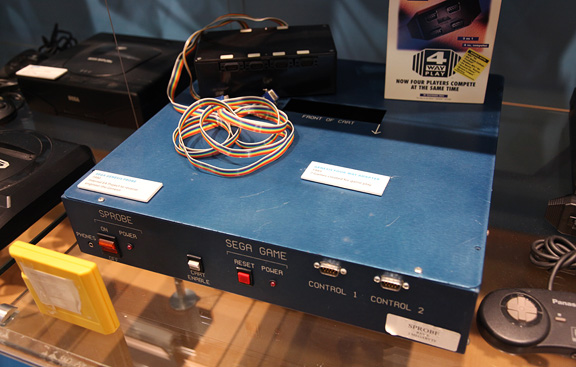
Meanwhile, Hawkins revealed his reverse-engineering project to Sega and offered a deal. Let's team up against Nintendo. Share the glory. You can sue, but we did the tech fair and square and have great lawyers. So make us an official licensee. And give us a reduced rate. Sega normally charged an $8 to $10 fee per game cartridge. Hawkins asked for $2 per game and a $2 million cap. Negotiations stalled.
"Only two times at EA did everyone in my management team pull me into a room and say, 'We all disagree with you,'" Hawkins said. "The first time was about not having private offices. The other time was this."
He stuck to his guns. Ten days later, on the eve of a major consumer electronics show in Chicago, Sega relented, afraid EA would sell its reverse-engineering knowledge to other software companies and torpedo the Genesis' entire business model.
"Over three years," Hawkins said, "that $2 million cap saved us $35 million."

By the late summer of 1990, Genesis "Madden" was almost finished. Hawkins felt it would be EA's big break: right time, right market, right platform, right game. Meanwhile, Sega was in trouble. The company, like Atari before it, had signed Joe Montana as its North American spokesman but realized it wouldn't be able to complete a planned Montana game in time for the lucrative holiday retail season.
Hawkins received a phone call from Sega's Japanese president, Hayao Nakayama. It was his turn to make an offer: Trip, you should sacrifice "Madden." Give it to us to call it "Joe Montana Football." This will save Christmas. We'll both be better off. Bing Gordon, EA's top marketer, urged his good friend Hawkins to make the deal.
"I said, 'Are you crazy?'" Hawkins recalled. "This is the freaking franchise! This is the turning point. This is everything for us. Then I realized: Why don't we do both?"
What followed became one of the biggest secrets in video game history: EA built a "Montana" game for Sega that was designed to compete with "Madden." Sort of.
"We made sure it was totally inferior," Hawkins said.
Working from the "Madden" code base, EA removed the 3-D field, slashed the pro-style playbook from 113 plays to 13 and added cartoony, big-headed player graphics.
"Joe Montana Football" was a hit, but "John Madden Football" was an industry game-changer, spawning yearly sequels and creating a lucrative revenue model that still persists. Robust sales helped Sega pull neck and neck with Nintendo, triggering a second gaming boom -- this time around, retailers concluded gaming was here to stay. In 1990, EA had a market cap of about $60 million; three years later, that number swelled to $2 billion.
More crucially, video games were suddenly cool, the province of older teens and college kids, young men who loved competition and talking smack. Escaping the geek world, gaming set course for the center of the pop culture sun.
"Before 'Madden,' jocks did not play video games," Hilleman said. "Somebody playing games was more likely to get made fun of on ESPN than get featured on there."
Before 'Madden,' jocks did not play video games. Somebody playing games was more likely to get made fun of on ESPN than get featured on there.
-- "MADDEN" PRODUCER RICH HILLEMAN
For Madden (the man), the new world order dawned abruptly. Six weeks after the release of the Genesis game, he arrived in New York to broadcast a Jets game. In a pregame meeting with the team, an agitated New York wide receiver confronted the former coach.
"Three?" the player asked. "Three, old man? You want to see what a 3 looks like? I'll take you out on the field and show you a 3!"
"John had no idea what the guy was talking about," Hilleman said. "We wanted John to rate the players, even gave him a chart. But we added him late to the project. He didn't get it done. So [associate producer] Michael Brook and I sat down and rated them ourselves. Right away, we get a call from John's agent. All he says is, 'John will be doing the ratings next year.'"
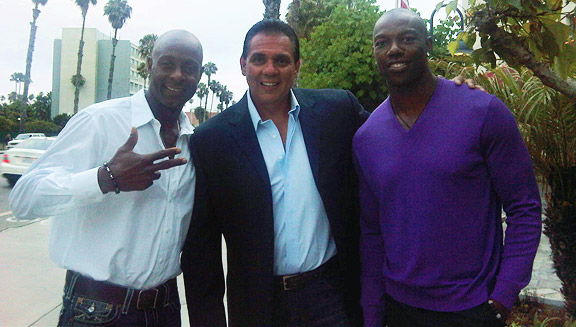
Sealed with a curse
2003
Atlanta Falcons quarterback Michael Vick appears on the cover of "Madden NFL 2004," then breaks his leg in a preseason game, prompting widespread talk of a "Madden" cover curse.
2003
Atlanta Falcons quarterback Michael Vick appears on the cover of "Madden NFL 2004," then breaks his leg in a preseason game, prompting widespread talk of a "Madden" cover curse.
En route from gaming hit to pop culture juggernaut, the "Madden" franchise has tackled external competition -- rival titles such as the "NFL 2K" series and "Mike Ditka Power Football" -- and the internal division that accompanies any big-money enterprise, with various production studios winning and losing the right to make the game.
"Madden's" secret weapon? A man named Sandy Sandoval. Officially, Sandoval is the director of athlete relations for EA Sports; unofficially, he's the game's answer to World Wide Wes and Winston Wolf -- part fixer, part bon vivant, the guy who helped give the game its inimitable pro football cachet.
Need an in-game ratings boost, what Madden (the man) calls "more juice"? Call Sandoval, as quarterback Byron Leftwich once did. Jonesing for an advance copy of the game? Call Sandoval, as Carson Palmer, Chad Ochocinco and dozens of other players have done. Need to drop a few pounds, albeit digital ones? Consider it done. Last year, Philadelphia Eagles coach Andy Reid asked Sandoval to slim down his in-game avatar, a little quid pro quo for introducing Sandoval to former "Madden" cover athlete Brett Favre.
"I just saw Andy at the owners meetings," Sandoval said. "He comes up to me and is like, 'Sandy, thanks for hooking me up. I saw myself in the game. My wife loves it. She loves looking at me skinny!'"
Sandoval came to EA from sports equipment maker Easton, where he canvassed clubhouses and locker rooms across the country, peddling batting gloves and hockey sticks. Each sale was a hard one. Athletes value comfort and familiarity over change. New gear was guilty until proven otherwise.
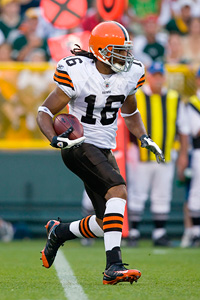
The first time Sandoval walked into the 49ers locker room with an EA Sports bag, however, things were different. He no longer had to explain himself. Or his product.
"All the young guys were already playing 'Madden,'" he said.
Years earlier, a single insight led Hawkins to create "Madden": Let the machine do the work. To that, Sandoval added a game-selling corollary: Let the jocks do the work. His first week on the job, he signed endorsement deals with Barry Sanders and Alex Rodriguez and invited Jerry Rice to visit EA's offices. He then pushed for cover athletes. Madden didn't like the idea; after all, it was his name on the product. In 2000, though, the former coach was off the cover of "Madden NFL 2001," replaced by Tennessee Titans running back Eddie George.
Overnight, cover appearances became a status symbol, in pro football and beyond. When New Orleans quarterback Drew Brees landed on the cover of this year's title, he read a Top 10 list on "Letterman."
"Teams go on the Wheaties box," Cribbs said. "But individually, when you make the cover of 'Madden,' you've arrived."
Of course, not all publicity is good publicity: A string of injuries, performance dips and off-field trouble for cover athletes such as Michael Vick, Daunte Culpepper and Shaun Alexander have prompted widespread belief in a "Madden" cover curse. Sandoval scoffs at the notion. Arizona receiver Larry Fitzgerald does not. Last year's "Madden" cover featured Fitzgerald and Pittsburgh safety Troy Polamalu. When the latter sprained his knee in the first game of the season, the former freaked out.
"After that game, Larry must have texted me three times before calling me," Sandoval said. "He's the only athlete who has talked to me about the curse. Just getting him on the cover was like trying to get him to walk a tightrope. I texted him the entire season: 'Great game. You made it, dude.' Then one week I was in San Francisco, sitting next to Larry's dad in the press box. Larry's leg got caught underneath him on a catch. I'm like, 'Please, don't let this happen.' Fortunately, he came back into the game. So that doesn't count."

Outsize success equals outsize expectations
2005
After a price war with the rival "NFL 2K" series -- produced, coincidentally, by former "Madden"-maker Visual Concepts -- EA signs an exclusive license with the NFL and the NFLPA, effectively eliminating football game competition.
2005
After a price war with the rival "NFL 2K" series -- produced, coincidentally, by former "Madden"-maker Visual Concepts -- EA signs an exclusive license with the NFL and the NFLPA, effectively eliminating football game competition.
Phil Frazier sighs. A senior producer at EA Tiburon and longtime "Madden" player, he would love to bring back the comic, still-revered ambulance from the game's 1991 edition -- a siren-wailing, red-cross-plastered white van that tore across the field to pick up injured quarterbacks, plowing through other players like bowling pins along the way.
There's just one roadblock.
"We've used the ambulance in presentations," Frazier said. "But with the NFL having to approve [in-game content], that's not the sort of thing we could slip past the goalie."
Football remains football, with 22 players on the screen. But for the current makers of "Madden" at EA Tiburon, everything else has changed. The suburban Orlando-based game-making studio took over "Madden" development in the mid-1990s and was acquired by EA shortly thereafter. In 2004, EA paid the NFL a reported $300 million-plus for five years of exclusive rights to teams and players. The deal was later extended to 2013. Just like that, competing games went kaput. The franchise stands alone, triumphant, increasingly encumbered by its outsize success.
Programming teams of two have swelled to 30. Offices that once contained a half-dozen game testers now house more than 100. A typical blockbuster game takes two or three years to program. "Madden" ships every 12 months, never mind that the effort required to approximate real football keeps rising. Digitally modeling Brees' head alone takes three to four days of work. A game spawned by the idiosyncratic vision of two men has become a popular institution. And, like any popular institution -- the federal government, for instance, or "American Idol" -- "Madden" belongs to anyone who expects something of it.
Which is to say, it belongs to just about everyone: an NFL that insists on protecting its brand; corporate suits who feel obligated to meddle with EA's signature title; a mass audience that expects each iteration of the game to be revolutionary, not evolutionary.
Behind the tinted windows of EA Tiburon's five-story office building, Jason Danahy does motion capture for "Madden," filming tosses and tackles, blocks and catches, all of which are performed by stuntmen wearing black bodysuits and bright, reflective balls. Generating a single big hit can require up to four takes; an average day encompasses a 100-move shot list. Stuntmen end up with bumps and bruises, sprains and torn Achilles tendons. Mo-cap actor Chris Robin once spent a week in a hospital after rupturing his spleen.
Before a hit or tackle ends up in the game, however, it requires NFL approval. Danahy walks a design tightrope: create violent collisions worthy of the game's "hit stick" control scheme. But keep those same encounters clean. "We send everything to the league," he says. "We have problems when the guys get too fired up and shove each other after the play, or jaw at each other."
Ian Cummings is the creative director for "Madden." If there's something amiss in the way the game plays, it's ultimately his fault. Mike Young is in charge of art. If the style of Pittsburgh's digital helmet numbers looks wrong, he's probably to blame. Cummings played his first game of "Madden" on the Apple II. Young grew up in St. Louis before the Rams arrived; as a child, "Madden" was his NFL. In a large corner office adorned with a University of Tennessee flag, the two work side by side, in part to better communicate, in part to commiserate, as in the following exchange:

Cummings: "Updating player gear is such a pain. Like a guy changing from a single wristband to a double. It never stops."
Young: "We have people that just catalog this stuff every week. A player will start wearing team-colored gloves. A team will put a special logo on the 20-yard line for Week 8. Another team won't wear a special patch. And if we don't have that, it ruins the game for some people."
Cummings: "'Madden' might have the hardest community to please. It's painful. It ruins weekends. I've been out to dinner with my wife, and I check my phone [for online fan feedback]. It's all, 'You suck; you're terrible; give up the NFL license.'"
Young: "The perception among some people is that the game doesn't change every year. But I'm here working 16-hour days and sleeping in the office. That perception hurts."
To function as its namesake intended, "Madden" has to invoke real football. To work as a video game, it has to transcend the brutality of three yards and a cloud of dust. Feel realer than real. Be fun. This always has been Madden's animating tension -- a debate between what avid gamers call "sim" (say, botched virtual long snaps) and "arcade" (say, throwing 60-yard laser-guided bombs while scrambling backward) -- a split NFL players might recognize as the difference between training camp tedium and Sunday afternoon's adrenalized rush.
Yet while the game itself grows ever more complex -- in-game playbooks that once came from Cooney's collected assistant-coach scribbles are now based on actual NFL coaching film -- finding a happy medium remains more art than science. Online data mining can tell Cummings that Madden gamers threw more than 7 million interceptions while playing as Favre. But stat tracking can't tell him whether those same gamers had a thrilling time doing so.
For "Madden NFL '06," EA Tiburon introduced the first major change to in-game passing since Hilleman's button-to-receiver mapping on the Genesis. They called it the passing cone. When gamers dropped back to throw the ball, they had to use an analog stick to steer an on-screen cone -- imagine light from a flashlight -- toward the receiver they wanted to target. The cone was intended to approximate the real-life difference between great quarterbacks and lousy ones: Peyton Manning's cone was nearly as wide as the entire field, Rex Grossman's as narrow as a laser beam. The system worked: The cone made playing QB hard. Gamers hated it, and it was gone by "Madden '09."
"Whenever a feature is that polarizing, it ends up being a failure in our eyes," Frazier said. "We have to develop stuff that is pretty much universally liked."
Can "Madden" itself remain universally liked? That's the larger question keeping EA Tiburon up at night. The franchise has surfed a pair of rising cultural tides: video games and pro football. But the ocean is shifting. "Madden" was once a disruptive product, a killer ambulance bowling over competitors. Now it's the status quo, established and entrenched, but possibly vulnerable. To wit: "Madden NFL '10" sales were lagging behind during the game's August release, usually a prime selling period. For the first time, EA Sports paid for significant television advertising in November and December. The spots helped, but launching into the teeth of a recession still kept overall sales flat. Still, current sales are less of a concern than future growth.
The game's consumers are loyal and legion, good for 6-7 million copies sold, year after year. The same gamers are aging, however, guys in their late 20s who are starting families and running out of the free time needed to set the price of hot dogs in franchise mode. Meanwhile, younger gamers have been weaned on "Halo" and "Call of Duty." First-person shooters -- not sports simulations -- are their default genre. Industry growth is being driven by simple, social gaming -- the runaway sales success of the swing-your-arm, even-Grandma-can-play Nintendo Wii; the reported 80 million users of the cartoony, point-and-click "Farmville" on Facebook.
Scott Orr helped design the original Genesis "Madden." He shepherded the franchise through the 1990s. After leaving EA in 2001, he stopped playing the game. He recently gave it a whirl.
"It was so complicated," he said. "It used to be you didn't have to be a video game expert or a football aficionado to have fun with the game. That's why it exploded and resonated. Three buttons. Everyone could pick up and play. Now, unless you practice and have time to devote to it, you'll get your butt kicked. I suspect that on Friday and Saturday nights, guys that used to play 'Madden' are playing Texas Hold 'em."
Jeremy Strauser started at EA in 1995, working for Orr as a game tester. Today, he's the executive producer for "Madden," the man in charge of the franchise. He wears a perpetual look of earnest concern. Nobody loves the game more; nobody at EA Tiburon knows Madden (the man) better. On a shelf in Strauser's office are copies of every "Madden" game he has worked on, neatly boxed and stacked, tangible points of pride and dread.
"There's a lot for us to live up to in terms of history, expectations, the legacy of the franchise," Strauser said. "We're in our 22nd year. I lose sleep over screwing it up."
Forgotten but not gone
2003
The Pro Football Hall of Fame opens a "Madden NFL" exhibit. Three years later, Madden himself is inducted into Canton.
2003
The Pro Football Hall of Fame opens a "Madden NFL" exhibit. Three years later, Madden himself is inducted into Canton.
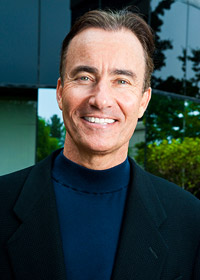
The sun dips over a distant San Francisco skyline. Hawkins sits in the San Mateo office of his current company, Digital Chocolate, a mobile phone game maker. The place is mostly empty. Now 56, Hawkins still plays "Strat-O-Matic"; like Orr, he hardly plays "Madden" anymore. His memories are fond but tinged with regret. Hawkins left EA in the early 1990s to spearhead 3D0, an ill-fated console maker that became a doomed software house. An icy rift between the company and its founder ensued. Detached from the game, and the company, he created, he sometimes feels like the stepfather of his own children -- never more so than a decade ago, when he wasn't invited to a 10th-anniversary "Madden" party. Mention the old coach, however, and Hawkins smiles.
"John and I have a special shared feeling from what got created there, a mutual appreciation," he said. "It wouldn't have been created as well without the both of us. He could have thrown me under the rug. But he knows what we did."
Every Christmas, a gift arrives at Hawkins' office. A 3-pound box of chocolates. Regards, Virginia Madden. John's wife.
"At the anniversary party, I heard John kept asking, 'Where's Trip?'" Hawkins said with a sigh. "'Where's Trip?'"

Once a coach, always a coach
2009
En route to scoring a dramatic, game-winning touchdown against the Cincinnati Bengals, Denver Broncos receiver Brandon Stokley runs parallel to the goal line to kill clock. He subsequently tells Wired magazine that the move was "definitely" out of a video game. Life imitates art.
2009
En route to scoring a dramatic, game-winning touchdown against the Cincinnati Bengals, Denver Broncos receiver Brandon Stokley runs parallel to the goal line to kill clock. He subsequently tells Wired magazine that the move was "definitely" out of a video game. Life imitates art.
"I used to say, 'Damn it, you can't go for it on fourth down all the time,'" Madden laments. "But nobody in video games wants to give up the ball."
He is sitting at the far end of a marble-top conference table inside his Pleasanton, Calif., production studio, a short drive from his family home. There's plenty of food, divided into what Madden terms "floaters" (mixed green salad) and "sinkers" (baked ziti, meatballs the size of cue balls). Chowing down are Madden's son, Joe, who runs the studio's soundstage, and a handful of people from EA Tiburon: Strauser, playbook guru Anthony White and a few others. They're here to discuss the upcoming "Madden NFL '11." That is, when the former coach isn't holding court on gap control and overload blitzes.
"Let me ask," Madden said. "When we get into the spread, the quarterback in shotgun, do the linemen get in three-point stances?"
"In some sets," White said. "But largely in two-point."
"They should all be in two-point stances," Madden admonished.
Madden is 74, a grandfather and retired from broadcasting. Clad in a black tracksuit and a collared, button-down shirt, he seems smaller in person than on television -- voice less booming, movements more ginger. A few years ago, EA removed Madden from in-game color commentary duties. (When Strauser broke the news, Madden replied, "I feel that something is being taken away from me.") Sipping from a can of diet cola, his enormous cigars long gone, he remains an advocate for real football, for art imitating life.
White flips open a laptop. Using "all 11" Detroit Lions coaching film, shot from the same perspective as Madden's original pseudo-3-D field, he demonstrates new in-game blocking schemes. Madden nods his approval.
"The quarterback may fake," White said. "But the guards never lie."
Another nod.
"Anyway, running the ball wasn't Detroit's problem," White continued. "It was passing."
"Once they had Daunte Culpepper in [at quarterback], teams just dared him to pass," Strauser interjected. "He used to be so accurate. What happened to that guy?"
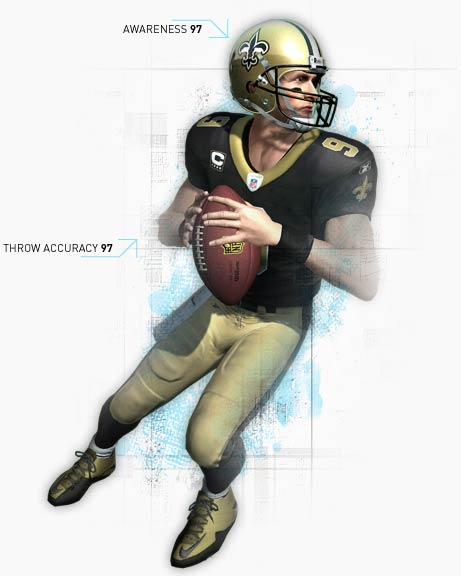
"Wasn't he on our cover one year?" White asked.
Everyone laughs. Madden gets serious. He breaks down upcoming rules changes. He brings up concussions, helmet-to-helmet hits and gimmick quarterbacks. A digression on how the Dome Patrol-era Saints used to frustrate Bill Walsh's 49ers teams with short linebacker drops becomes a lecture on the obsolescence of the fullback, which then morphs into a short aside on player character.
Who, Strauser asked, are the hardest players to coach?
"Single guys," Madden said. "Because they don't have anyone to report to."
When Madden left the Raiders, he took a job at the University of California, offering a course called "Football For Fans." Three decades later, he's still teaching. In a way, so is his game. Current Tampa Bay Buccaneers coach Raheem Morris told game producers that playing "Madden" has influenced the way he runs his team. Before scoring a game-winning touchdown last season, Denver Broncos receiver Brandon Stokley killed clock by running parallel to the goal line, an unconventional move familiar only to anyone who has ever picked up a control pad. Years ago, Madden wanted his namesake to resemble a television broadcast; by the late 1990s, network producers were flipping the script, deploying skycams and electronic first-down markers, peddling their own brand of hyperreal entertainment. Life imitating art.
Strauser mentions 3-D televisions and the movie "Avatar." A compatible version of "Madden," he said, is already in the works.
Talk turns back to real football. The Super Bowl. Indianapolis versus New Orleans. In the first half, Saints coach Sean Payton went for a touchdown on fourth-and-goal, eschewing a "gimme" field goal. He opened the second half with an onside kick. Madden watched the whole thing from his California studio, incredulous and oddly transfixed. Even now, two months later, the old coach knows exactly what he was seeing.
"I was thinking, 'S---,'" Madden marveled, "'this guy is playing a video game!'"Patrick Hruby is a regular contributor to ESPN.com.
Join the conversation about "The Franchise."


